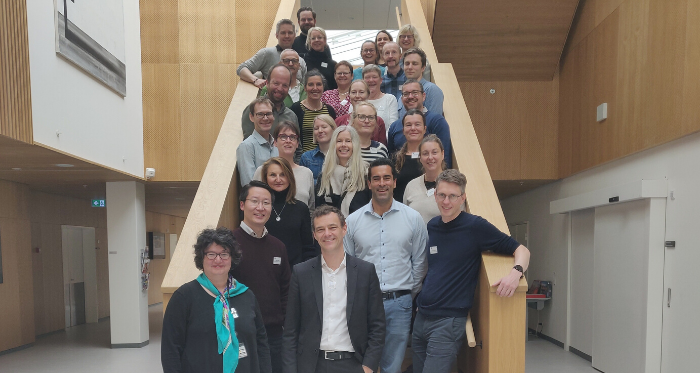
Photo: Simon Buus
12-11-2019
On November 1, DCCC Radiotherapy and the Department of Oncology at Aarhus University Hospital hosted a much requested workshop on stereotactic radiotherapy for bone oligometastatic disease. One of the key takeaways from the workshop is the importance of a multidisciplinary approach to treatment with the specific type of radiotherapy.
30 participants from different specialties were gathered at Aarhus University Hospital to share knowledge about the specialised type of radiation therapy. About half of the participants travelled from Norway and Sweden and the workshop presented a great opportunity to network. The workshop was supported by DCCC and arranged by Yasmin Lassen and Simon Buus from the Department of Oncology at Aarhus University Hospital in collaboration with the national research centre DCCC Radiotherapy.
High dose radiation therapy with great accuracy
In Stereotactic Body RadioTherapy (SBRT), high dose radiation therapy is targeted in a delineated area, focusing directly at the tumour from many different angles. The workshop centred on sharing knowledge of the SBRT-treatment for bone oligometastatic disease, which is particularly prevalent for advanced cancer. SBRT is also applied in treatment for brain tumours and heart metastasis as well as for liver metastasis and certain lung tumours.
The workshop began with a presentation from Dr. Max Dahele, Radiation Oncology at VU University Medical Centre Amsterdam. Max Dahele presented methods and results from recent studies and also discussed radiation doses, organs at risk and methods for limiting the adverse effects on the normal tissue including bone fractures. Furthermore, Max Dahele presented different purposes of the treatment in terms of limiting pain and metastatic spread as well as improvement of the patients' quality of life. The presentation emphasised that implementation of the treatment method not only relies on the latest technology and equipment, but also depends on collaborating across specialties in orderto determine which patients that will benefit from the treatment.
The importance of collaboration across specialties was further emphasised in the following presentations from Miao Wang, Department of Clinical Medicine – Orthopaedic Surgery and Edith Nielsen, Department of Clinical Medicine – Radiology, Aarhus University who presented a surgical and radiological perspective on the matter. The presentations encouraged a discussion on collaboration during the course of treatment. Both speakers presented specific cases and actual experiences, and the following questions were rooted in particular practice-oriented examples. Part of the programme was thus dedicated to delineation and discussion of the target area and normal tissue as well as dose planning.
Read more about the Danish National Research Centre DCCC Radiotherapy
Read more about the programme and the idea behind the workshop
